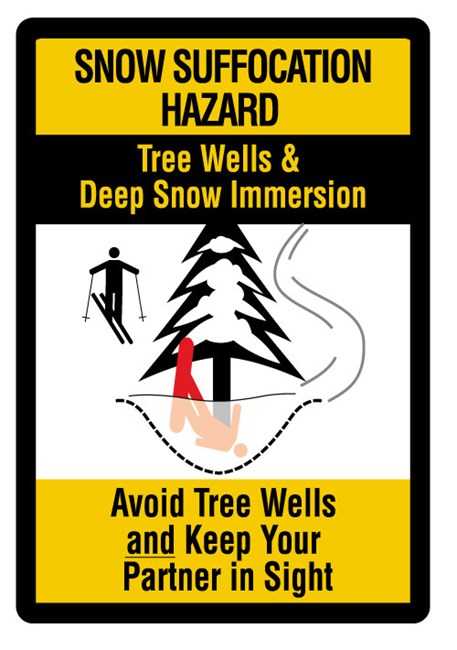Nothing in the world compares to skiing or riding in deep powder. It's what keeps us motivated, season after season, to keep coming back to the mountains. But like any sport, skiing and riding are not without risk. Some of those risks are obvious; falling, catching an edge, getting injured. If you're a backcountry skier, then getting caught in an avalanche is another risk. But one hazard that is often overlooked is the danger associated with tree wells. Every year, tree wells or Snow Immersion Suffocation (SIS), present a real hazard to those skiing and riding in the trees at both the ski resort and in the backcountry.

 So what is a tree well? Well, think of a coniferous tree like a spruce, fir or jackpine. When lots of snow falls around the tree, the branches at the lower reaches of the tree tend to prevent snow from accumulating around the trunk. Instead, snow piles just outside the edges of the lowest branches and forms a well around the base of the tree. When you come close to the edge of that well, especially during or right after a big snow storm, the sidewalls can collapse and down you go, into the tree well. In the worst case scenario, this puts you into it headfirst and believe me, it can be almost impossible to get out of a tree well without help.
So what is a tree well? Well, think of a coniferous tree like a spruce, fir or jackpine. When lots of snow falls around the tree, the branches at the lower reaches of the tree tend to prevent snow from accumulating around the trunk. Instead, snow piles just outside the edges of the lowest branches and forms a well around the base of the tree. When you come close to the edge of that well, especially during or right after a big snow storm, the sidewalls can collapse and down you go, into the tree well. In the worst case scenario, this puts you into it headfirst and believe me, it can be almost impossible to get out of a tree well without help.
In the backcountry, I think for the most part folks are a little more attuned to the risks associated with their given activity. If you come ski with us, our guides will give you safety instructions and keep a good eye on you. But at the ski resort, we tend to let our guard down a little. And while many of the risks associated with backcountry skiing are mitigated at a ski resort (avalanche control, as an example) tree wells cannot be 'controlled' the way avalanches can. Tree wells exist in the trees wherever there is snow. So even on a bluebird powder day at your local resort, the dangers of tree wells are as real and present as they are in the backcountry. Thankfully, there are a bunch of things you can do to stay safe.
 Waist deep in the trees. Is there anything better? | Photo - Jun Yanagisawa
Waist deep in the trees. Is there anything better? | Photo - Jun Yanagisawa
With any risk, the easiest way to mitigate the danger is avoidance. With tree wells, that means staying on the groomed piste. The downside to that is missing one of the best aspects of skiing; there is no more magical experience than waist deep turns in the forest on a storm day. It's what skiing and riding are all about. Thankfully, there are a few simple precautions you can take to mitigate the hazard of tree wells and hopefully avoid them altogether. First, always ski and ride with a partner. In the trees, that means keeping them in sight at all times. This is critical, and something any ski guide will tell you is number one on their list. If you or they go down, you need to be in a position to help or call for help. Standing in the lift line, waiting, does no one any good. Second, when you do ski in the trees, try and ski to hit the snow. This means that focusing on avoiding trees tends to send you into them because you are looking right at them. If we ski or ride in a way where we focus on the snow, instead of the trees, we tend to not get too close. On big powder days, give the trees a wide berth. Finally, carry some gear with you. A whistle, cell phone, recco, shovel, probe and transceiver can all come in handy. I know it's inbounds skiing, but all of those things could save you or your buddy's life if one of you goes into a tree well.
What to do if YOU GO DOWN
Tree wells are scary. As a ski patroller, it's something I see every year. So don't take unnecessary chances. Definitely get out there on a powder day, but get informed and learn what you can do to stay safe and always ski with a buddy. No one wants to ruin their ski day. One of the best resources for tree well safety tips and information is the website www.deepsnowsafety.org Put together by the Northwest Avalanche Institute and the Mt Baker Ski Area. deepsnowsafety.org is a comprehensive site for information about tree wells and deep snow immersion.
Be safe, ski hard.
—D’Arcy Mcleish
More from Last Frontier Heliskiing
January conditions at Last Frontier Heliskiing
Nutrition: What you should eat on a ski day
One ski to shred them all?